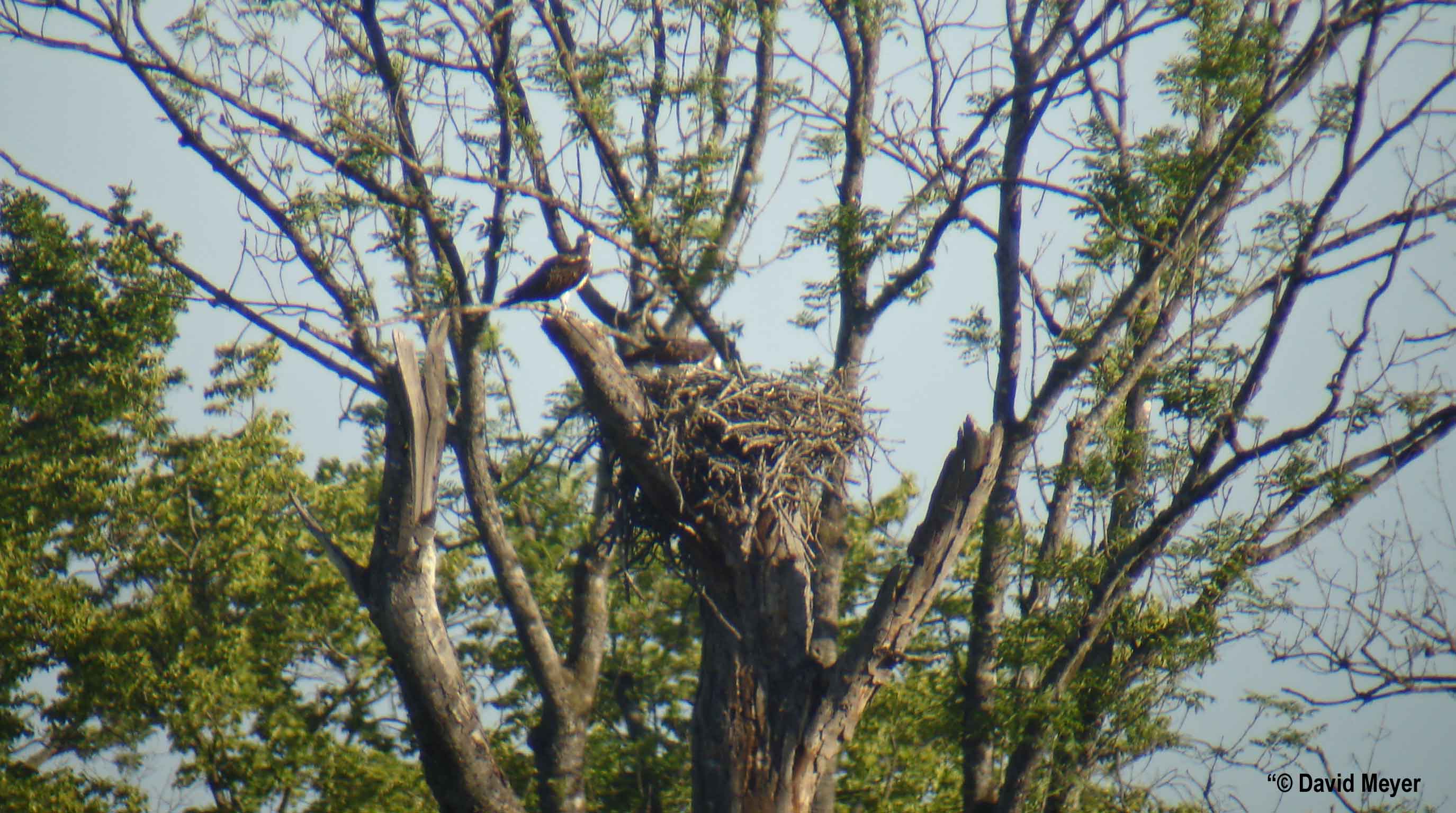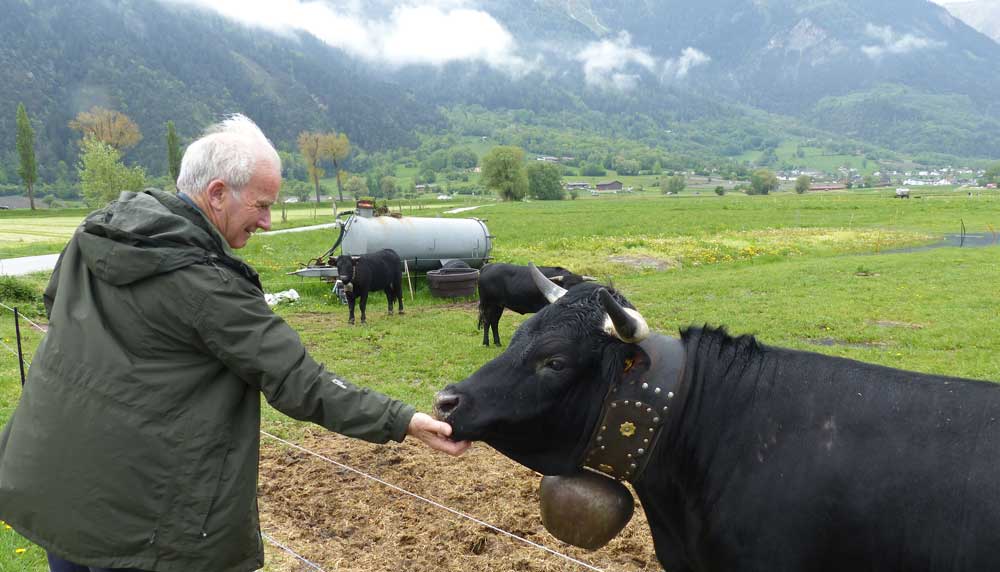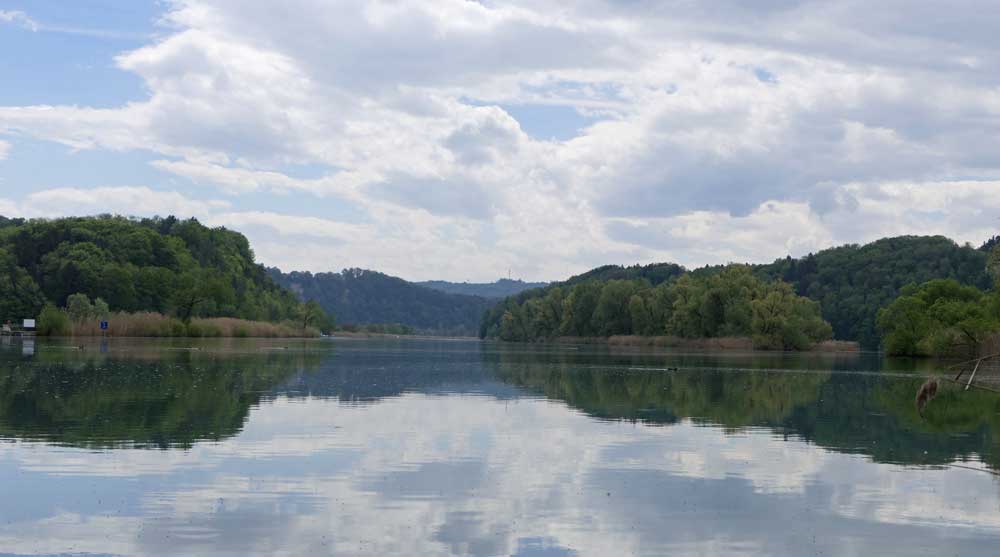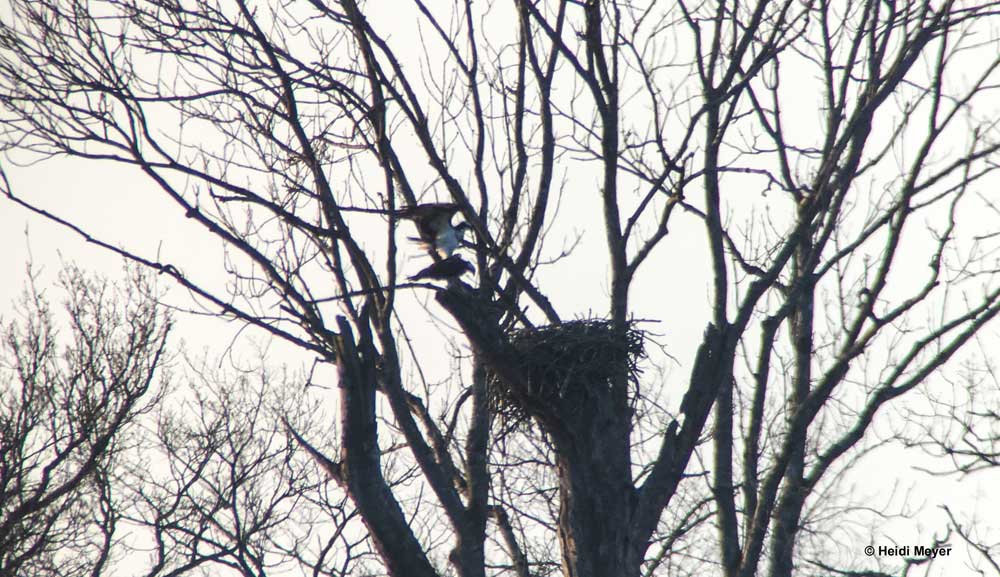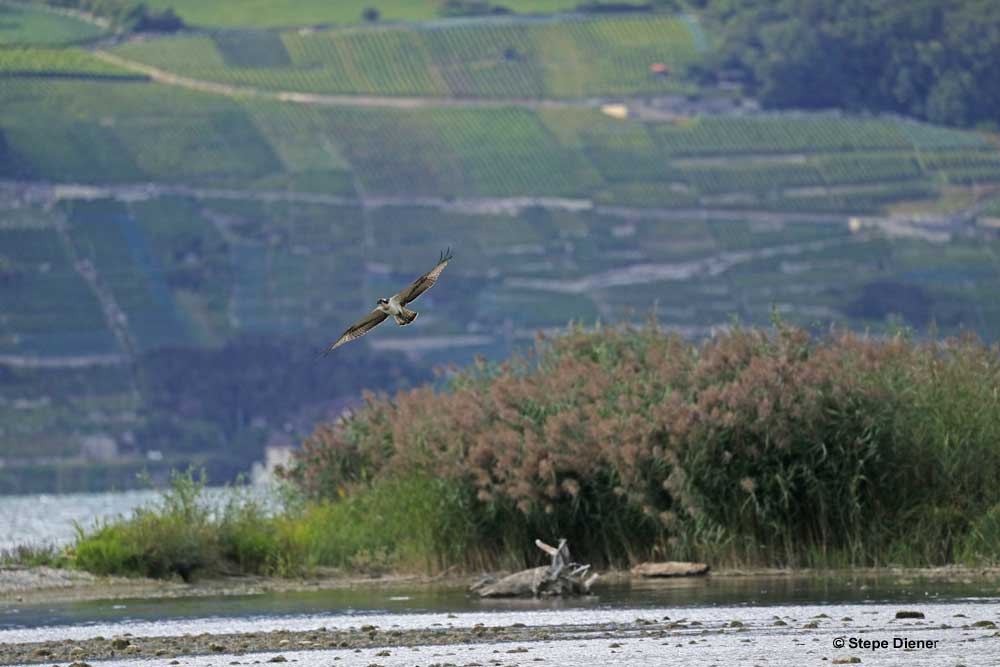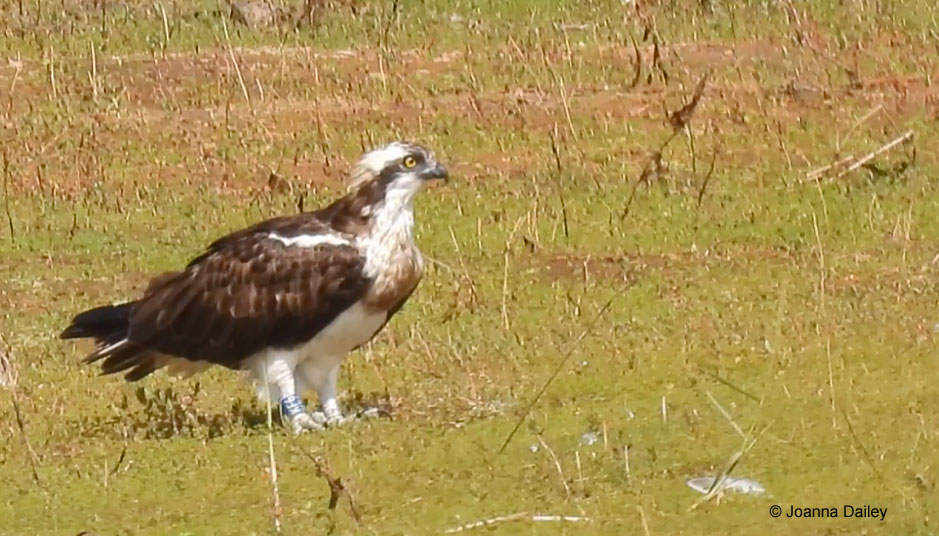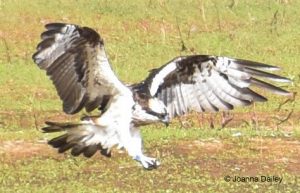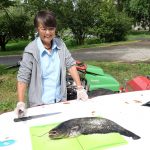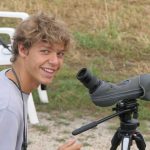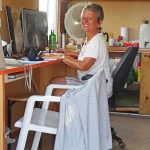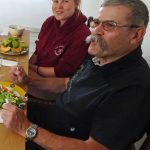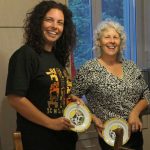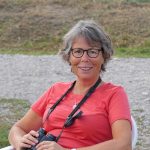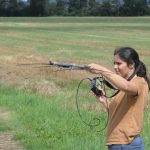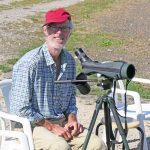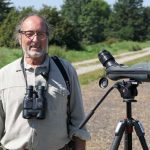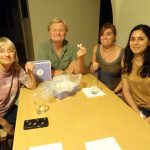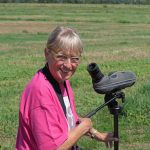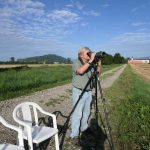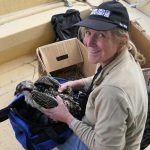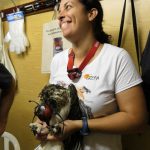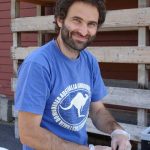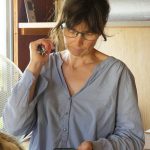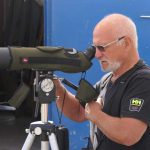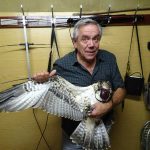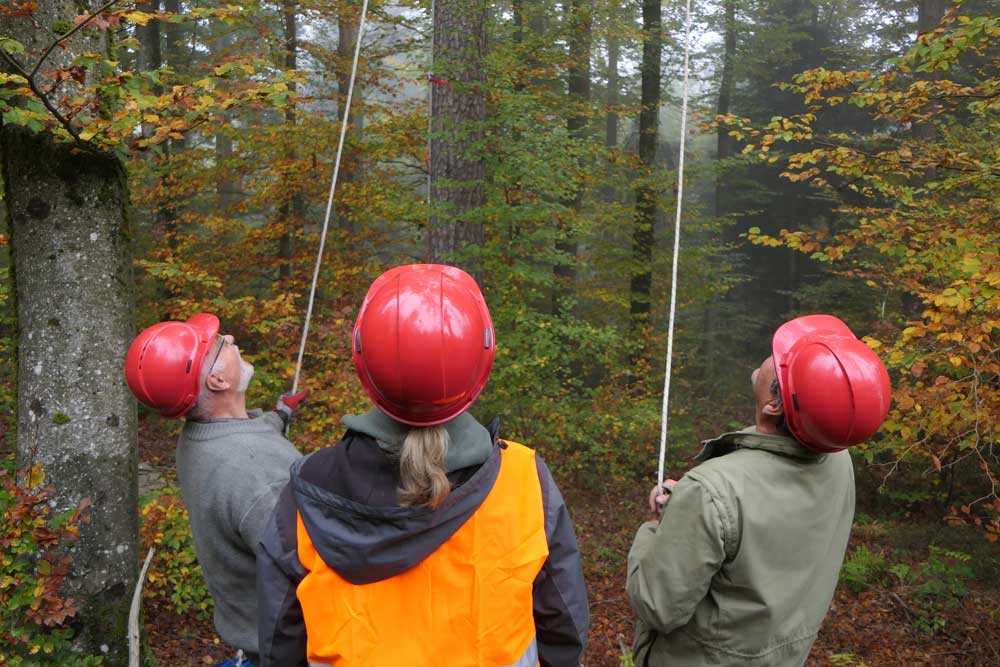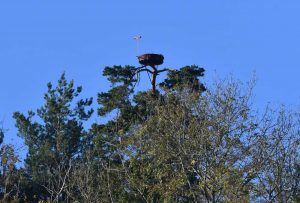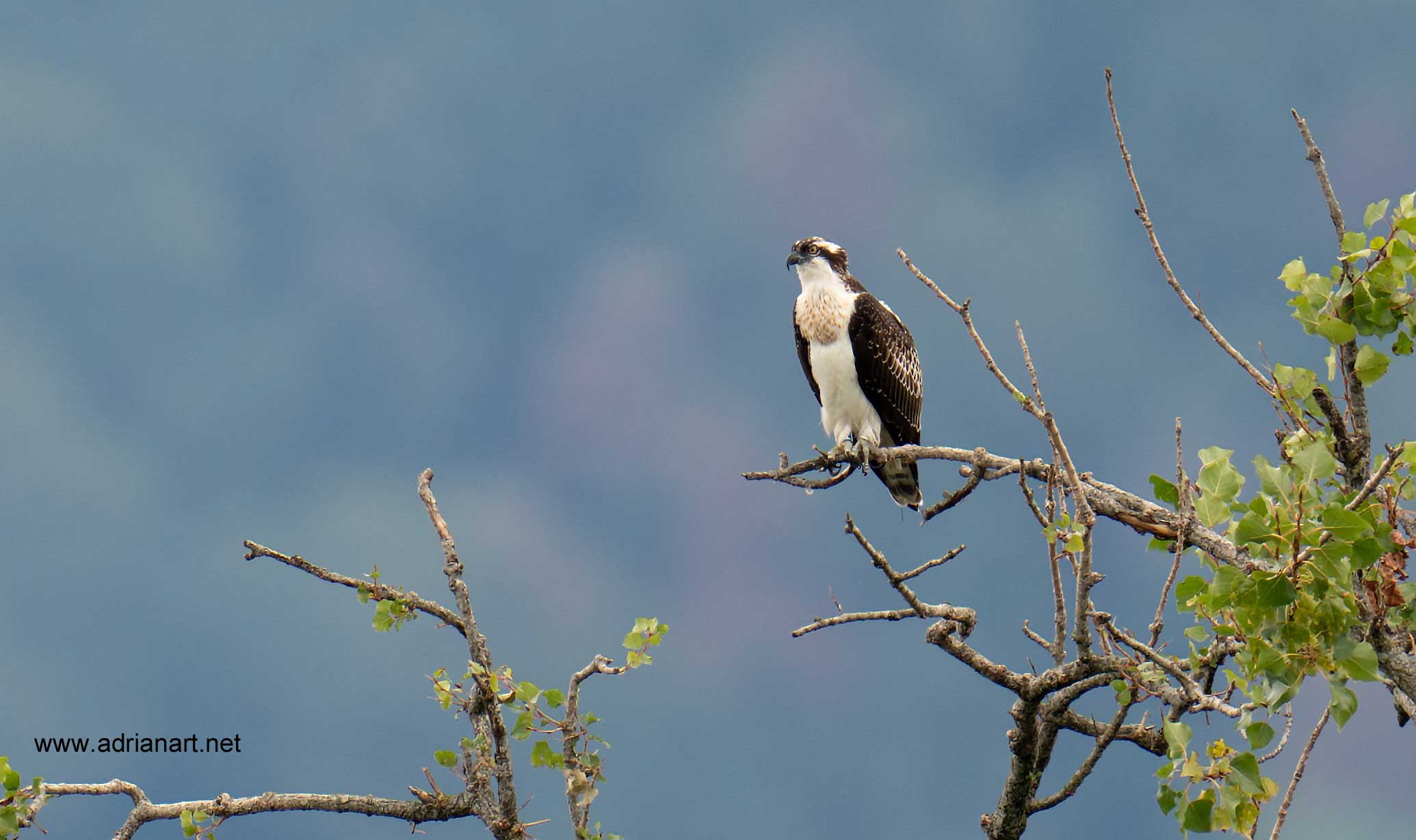She’s done it! Mouche PR4, born in eastern Germany and translocated when she was 5-6 weeks old to Switzerland, from where she migrated on August 25, 2016, now has young in the French Department of Moselle. We received this great news from David Meyer who has been monitoring the nest, built on top of a tall, dead tree, so impossible to see for the time being how many chicks there are. The male, ringed AM06, was seen on May 30 (photo by digiscopy) bringing fish to the nest, which Mouche was carefully tearing into small pieces and feeding to one or more chicks.
This is the first time since over a century that a Swiss-fledged Osprey has bred: a new important milestone for the project of “Nos Oiseaux”.
As often is the case with female Osprey, Mouche settled relatively far from her fledging site, joining a small breeding population in Moselle. After being spotted only once in 2018 in the neighbouring Department of Meurthe-et-Moselle, in 2019 she found a partner and they built a late nest during the summer. So this year we had high hopes that both birds would safely return from migration and start breeding.
After the first return (Fusée PR9) in 2018, and now the reproduction of Mouche in eastern France, the next hoped-for milestone is to have a territorial pair in Switzerland within the next few years. In the meantime, best wishes to Mouche and her partner to successfully raise their first family in Moselle!

